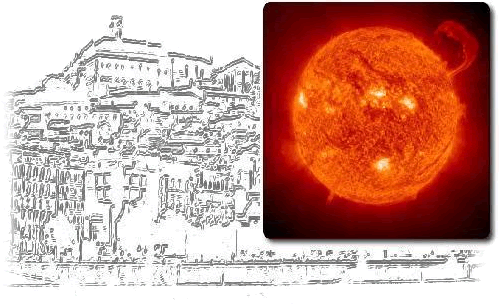|
|
|
|
|
|
|
|
|
|
|
|
|
Ivan Dorotovič, Mr. - PhD |
|
Slovak Central Observatory, Hurbanovo, Slovak Republic |
|
|
|
|
|
|
|
Session 5 - Poster |
|
Roles of Ground-based Solar Observations of Hida Observatory toward the Solar-C Era |
|
S. Ueno (1), K. Shibata (1), K. Ichimoto (1), S. Nagata (1), I. Dorotovič (2,3), E. Shahamatnia (2), R.A. Ribeiro (2), J.M. Fonseca (2),
1 - Hida Observatory, Kyoto University, Japan; 2 - CTS-UNINOVA, FCT/UNL, Caparica, Portugal; 3 - Slovak Central Observatory, Hurbanovo, Slovak Republic |
|
|
|
Full-disc solar images, obtained both with the ground-based solar telescopes and the instruments onboard the satellites,
provide essential observational material for solar physicists and space weather researchers for better understanding the Sun, studying the evolution of various features in the
solar atmosphere, and also investigating solar differential rotation by tracking such features along time. For the realization of the Solar-C satellite, discussions about
scientific themes and preliminary observations are internationally carried out now.
At Hida Observatory of Kyoto University, we will play the following roles toward the Solar-C era by utilizing the Domeless Solar Telescope (DST) and the international
solar chromospherirc full-disk observation network (CHAIN project) that includes the Solar Magnetic Activity Research Telescope (SMART). In addition, with the
collaboration of UNINOVA (Portugal) we will discuss the suitability of applying a hybrid Particle Swarm Optimization (PSO) algorithm and Active Contour model
on SMART (Hida Observatory, Japan) images for tracking and determining the differential rotation of sunspots.
1) Roles before the Solar-C launch:
By using DST's focal plane and high-dispersion and wide-wavelength spectroscope, Hida Observatory will play a role as the place of the development of new detectors
and focal plane instruments. On the other hand, we will reveal unclear points in the chromospheric physics and in methods of deriving physical quantities of chromosphere,
by carrying out spectrum observations and polarization measurements in various chromospheric absorption lines.
2) Roles after the Solar-C launch:
Promotion of cooperative observations with Solar-C, mainly by observations with the DST. Our Hida Observatory will perform complimentary observations with
satellite's high-spatial-resolution observations that are limited in the spatial FOV and continuous observable time due to the data capacity and lifetime
of the satellite, or satellite's spectroscopic observations that are limited in the amount of information along the wavelength direction. Moreover, we will
expand and apply new knowledge provided by Solar-C to the whole of the sun, through our international full-disk solar monitoring network observation (CHAIN project).
It will mediate between the Solar-C and studies of variations of space weather and space climate.
3) Regular roles:
Our observatory continues to provide the place of educational-observation training for students and young researchers where they can gain experiences
that they operate instruments by their own hands while watching the Sun in real time. Moreover, we provide the place that can enforce not only scientific
advanced themes, but also other themes that are hard to be accepted in the case of satellites or hard to be carried out by satellites physically,
for example, experimental themes, classical scientific themes, themes that need long duration or large data capacity, and educational themes etc.
|
|
|
|
|
|
|
|




 









 |



